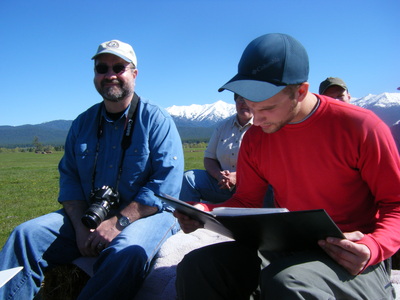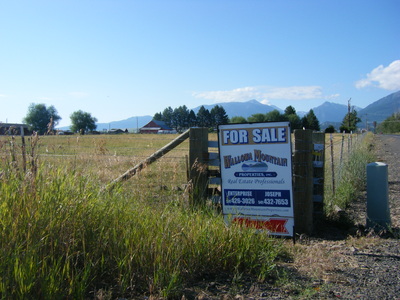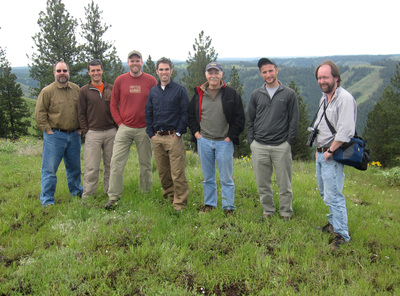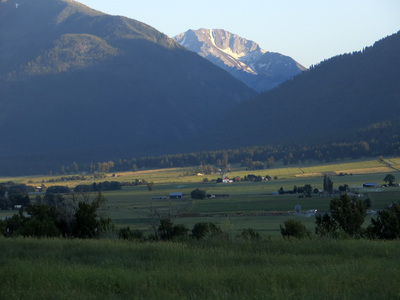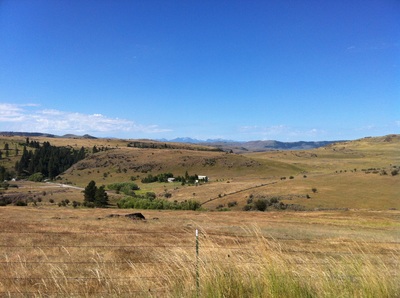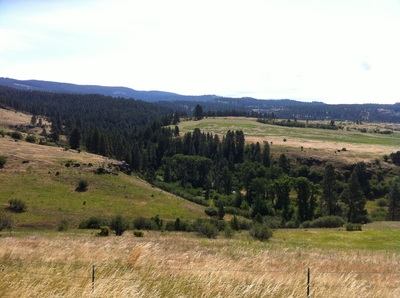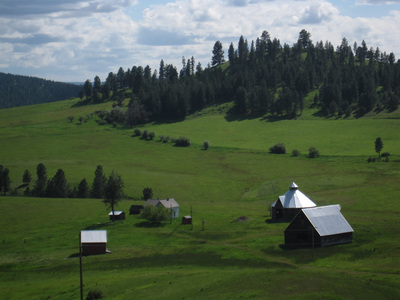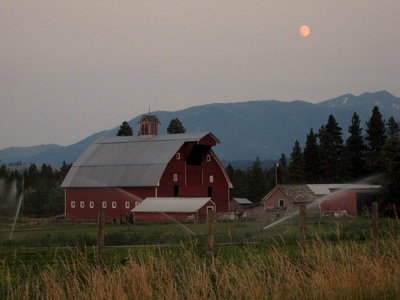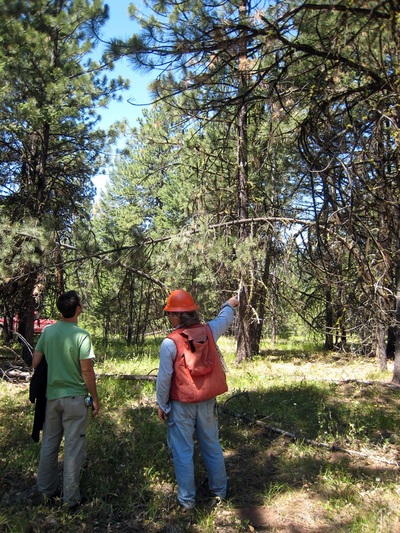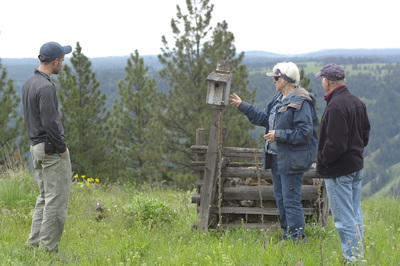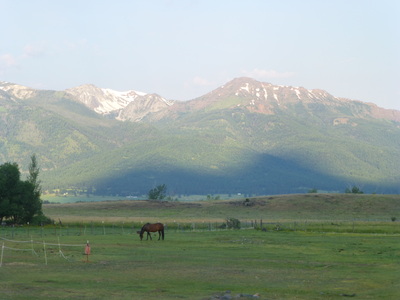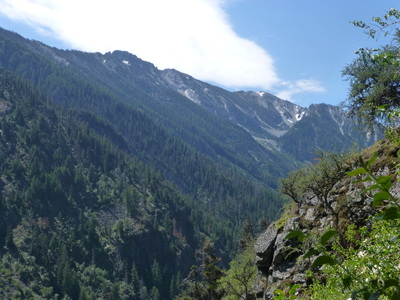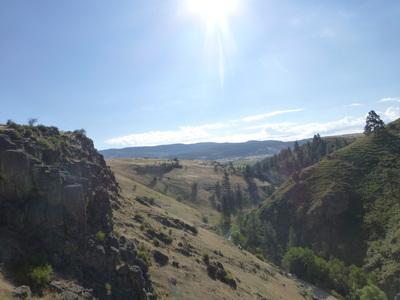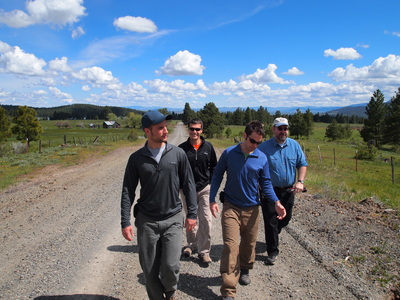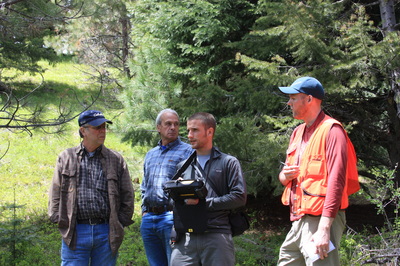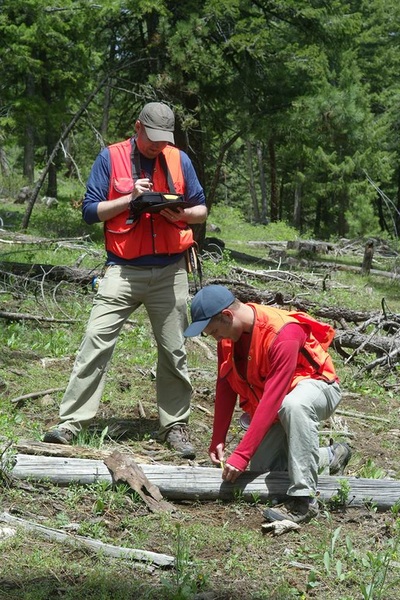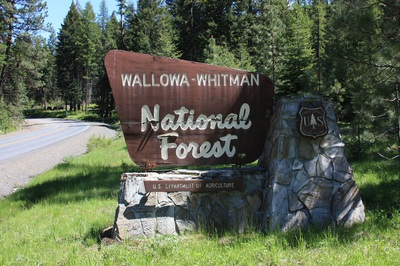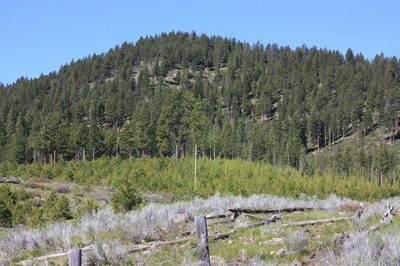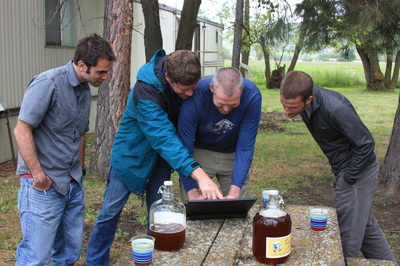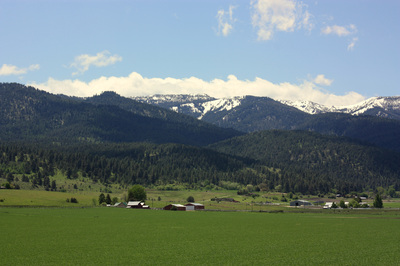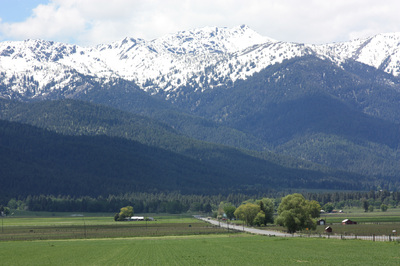BACKGROUND
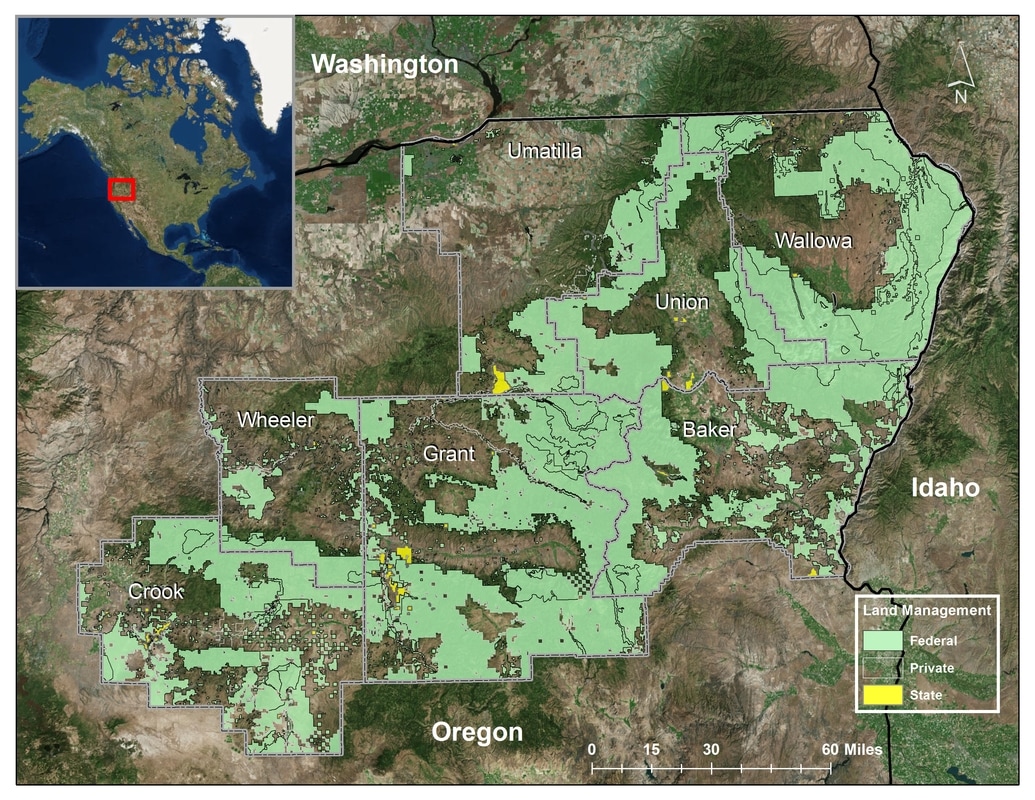
A decade into the 21st century, rural communities in the American West are at a transition. Traditional livelihoods in natural resource-based sectors (e.g., farming, ranching, timber) have been eroded by changing markets and policies, resulting in significant demographic change. The effect of climate change on fire regimes has been exacerbated by contemporary changes in land-use patterns and fire suppression efforts, causing fuels to accumulate and risk of large fire to increase. Forecasted growth of large-scale natural disturbances in North American forests, such as insect outbreaks and catastrophic wildfire, have the potential to cause large, abrupt releases of carbon, accelerating future climate change. They would also inflict heavy socio-economic costs. This study provides an integrated social and biophysical assessment of vulnerability and adaptation to climate change and variability in the Blue Mountains Ecoregion of Oregon.
BLUE MOUNTAINS ECOREGION
The Blue Mountain Province-Oregon (BMP-OR, 23,984 sq mi) is the largest section of the BMP (25, 275mi2), an ecoregion that encompasses parts of OR (83%, ID (14%), and WA (3%). OR’s largest ecoregion ranges mainly from 3-5000 ft (up to 9,839 ft in the Eagle Cap Wilderness) that covers a diverse complex of rugged mountains, steep valleys, and plateaus. Of this area we confine our study region to seven counties that contain significant forested area (Crook, Wheeler, Grant, Umatilla, Union, Baker and Wallowa) in northeastern OR. A small number of species dominate these forests: predominately grand fir, lodgepole pine, western larch, and Douglas fir at the lower altitudes and wetter sites, ponderosa pine on the drier and warmer sites, and subalpine fir and some Engelmann spruce and lodgepole pine at mid-altitude, wetter, and cooler sites. A high proportion of the land is publicly owned and managed as national forests (Wallowa-Whitman, Umatilla, Malheur) and BLM. Manufacturing, forestry, mining and agriculture founded the region’s economy and continue to have a strong presence in the local characteristic of communities, but have been in decline as new economies emerge and diversify worries residents because of limited infrastructure to respond to elevated fire risk.
RESEARCH OBJECTIVES
1. Quantify the current range of variation in forest conditions with a focus on small private landowners, and assess current landowner strategies for mitigating climate variability in forest and silvo-pastoral systems.
2. Examine historic range of variation, current range of variation, and “business as usual” projections of future variability to target and prioritize strategies for improving forest resilience to an uncertain and variable future climate3. Use recent climate data, IPCC scenarios, and climate matching techniques to enable landowner visualization of potential climate risks over the mid-term (10-30 years)
3. Analyze multivariate relationships between perceptions of climate change and strategies for adaptation and mitigation, separately among general public and forest-landowner populations
4. Use our findings to probe the mindset of stakeholder groups, collaboratives, and institutions regarding climate change to learn how the uncertainty of future conditions are factored and into and prioritized for management decision-making.
2. Examine historic range of variation, current range of variation, and “business as usual” projections of future variability to target and prioritize strategies for improving forest resilience to an uncertain and variable future climate3. Use recent climate data, IPCC scenarios, and climate matching techniques to enable landowner visualization of potential climate risks over the mid-term (10-30 years)
3. Analyze multivariate relationships between perceptions of climate change and strategies for adaptation and mitigation, separately among general public and forest-landowner populations
4. Use our findings to probe the mindset of stakeholder groups, collaboratives, and institutions regarding climate change to learn how the uncertainty of future conditions are factored and into and prioritized for management decision-making.
ENGAGED RESEARCH AND LOCAL PARTNERSHIPS
CAFOR is built upon strong local partnerships, and we are committed to engaging with the different communities where we do our research. We work closely with Wallowa Resources, Oregon State University Extension, US Forest Service, Oregon Department of Forestry, and many different landowners, logging contractors, conservation advocacy groups, and other stakeholder groups.
See what Wallowa Resources is doing to reinvigorate rural communities:
See what Wallowa Resources is doing to reinvigorate rural communities:
CARSEY SCHOOL OF PUBLIC POLICY
|
The CAFOR project is affiliated with the Carsey School of Public Policy at the University of New Hampshire, where project investigators Hartter, Ducey, and Hamilton are faculty fellows.
The Carsey School of Public Policy conducts policy research on vulnerable children, youth, and families and on sustainable community development. We give policy makers and practitioners the timely, independent resources they need to effect change in their communities. The institute was established in May 2002 from a generous gift from alumna and noted television producer Marcy Carsey. We are situated within the College of Liberal Arts and the College of Health and Human Services. The institute has received support from the Annie E. Casey, Ford, Kellogg, and New Hampshire Charitable Foundations, Jane’s Trust, and the New Hampshire Endowment for Health. |
FUNDING
Funding for CAFOR comes from two USDA grants:
Agriculture and Food Research Imitative (AFRI), Agricultural and Natural Resources Science for Climate Variability and Change.
National Institute for Food and Agriculture (NIFA), Disaster and Resilience Program
Agriculture and Food Research Imitative (AFRI), Agricultural and Natural Resources Science for Climate Variability and Change.
- USDA Press Release (Apr 22, 2014)
- UNH Press Release (May 7, 2014)
National Institute for Food and Agriculture (NIFA), Disaster and Resilience Program
- UNH Press Release (Oct. 14, 2010)
PROJECT SUMMARIES
Climate Change Adaptation In Working Landscapes Of The Intermountain Northwest, funded through the United States Department of Agriculture, National Institute for Food and Agriculture (2014-2018) [PDF]
Community and Forest: Linked Human-Ecosystem Responses to Natural Disturbances in Oregon (2010-2014). Funded Through USDA National Institute of Food and Agriculture, Disaster Resilience for Rural Communities Program [PDF]
Community and Forest: Linked Human-Ecosystem Responses to Natural Disturbances in Oregon (2010-2014). Funded Through USDA National Institute of Food and Agriculture, Disaster Resilience for Rural Communities Program [PDF]

